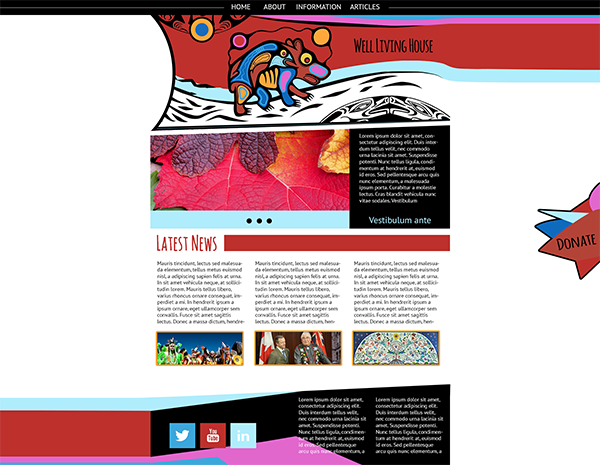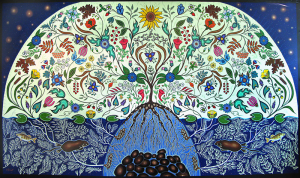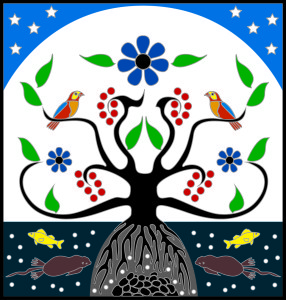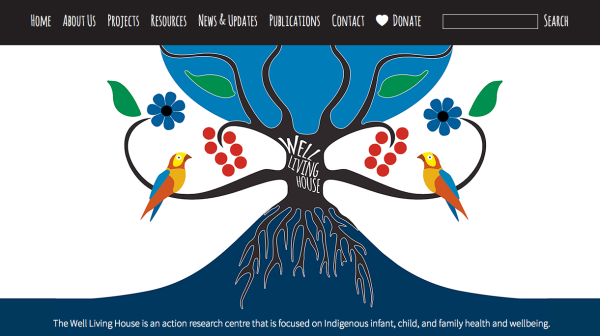At my last work term at ThoughtWorks, I got to work on a website for Well Living House, a research centre for Indigenous health at St. Michael’s Hospital in Toronto.
Developing for projects with a cultural emphasis requires an ongoing effort to understand and appreciate the cultural perspective. A developer should also be able to communicate effectively but in a respectful and sensitive manner with the client.
When work began on the Well Living House site, I came in with rough, stereotypical understanding of First Nations culture. Before initializing conversation with the client, I created a rough, just for fun mockup of the site. I pulled the design elements from a basic Google image search for “First Nations art”. I know, terrible right?

Although I never showed this mockup to the client, elements of it trickled down to early versions of the site.
The client wanted this beautiful mural to be the main inspiration of the site:

They had previously hired a graphic designer to pull elements of this mural to create a simpler and cleaner logo.

I thought the logo looked too busy, so I decided to take some creative liberties in Illustrator and re-design it.

“Some creative liberties”… such an understatement! When the client saw this re-design, they were not impressed. They thought it was pleasant, but in no way did it represent their brand. I remember one person describing to me how important the mural was and how the logo was approved by community leaders. I felt so disrespectful because my interpretation seemed to trivialize their cause. Fortunately, the client was not too worked up about this, and I quickly reverted to integrating the original logo in the design.
Once the site was up and running, I populated it with some sample data. For the images, I did yet another Google image search for “First Nations art”. It turns out that the results are mostly from the West Coast, which is not the primary area of focus for Well Living House. Even though sample or filler images are temporary, it is important that any cultural images used are appropriate.
Looking back, I now realize that I should have had more conversations with the client to better understand the culture. Some clients will be more upfront and explicit about integrating cultural elements; but most will require the developer to investigate themselves and ask the right questions.
In addition, be prepared to scrap work if the client does not like it. In general, this happens with any type of development. With cultural projects especially, it is not a good idea to pick a fight, i.e. convince the client that your interpretation is correct. However, this does not mean that compromising is out of the picture. In that regard, a perspective from a user that has little ties to the culture is still valuable (but not dominant).
Therefore, developing for culture is really an exercise in learning about culture. Put yourself in the client’s shoes, and try to transpose culture to design rather than just translate.
Related Posts:
Internships and Self-Esteem
Types of Co-op Students
Spring Cleaning